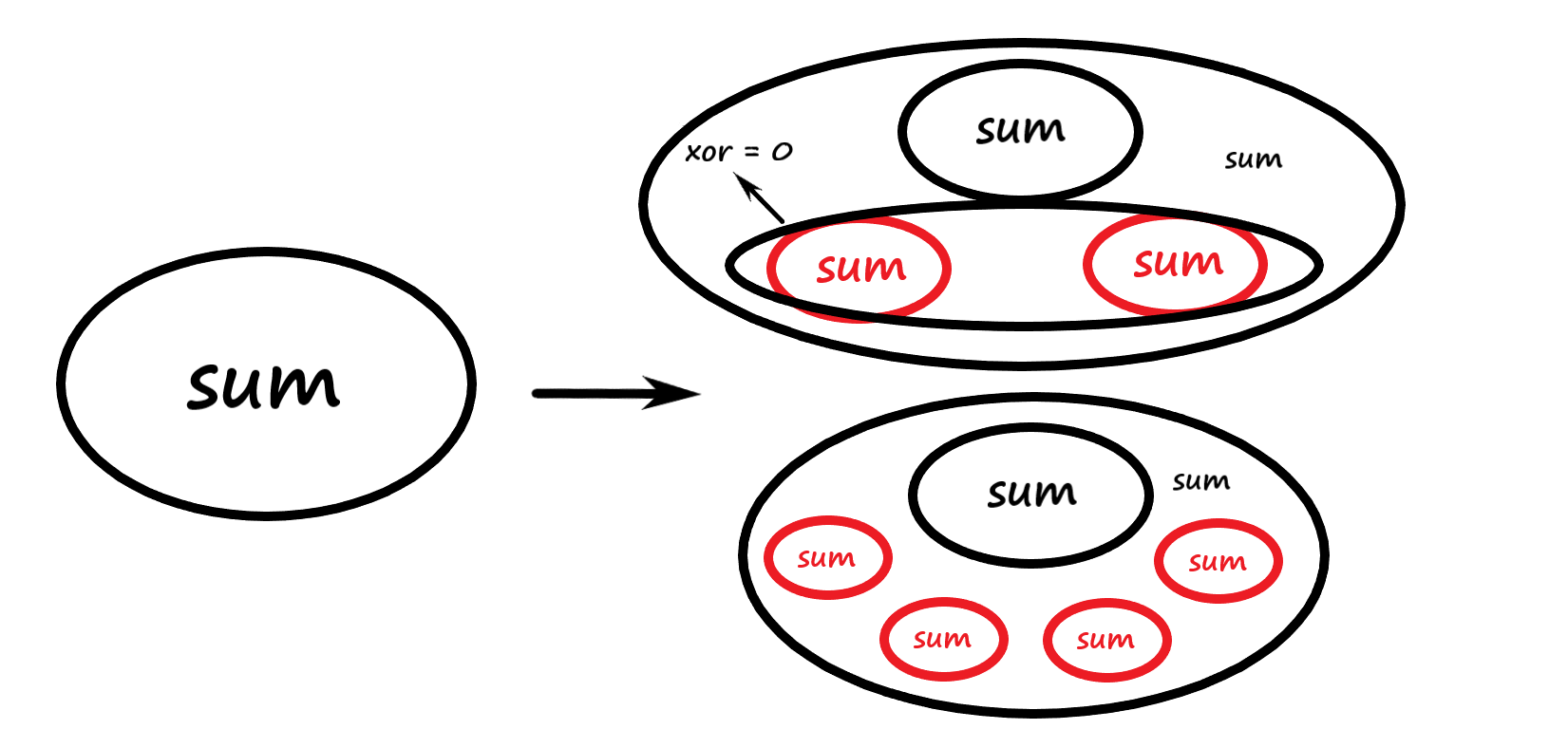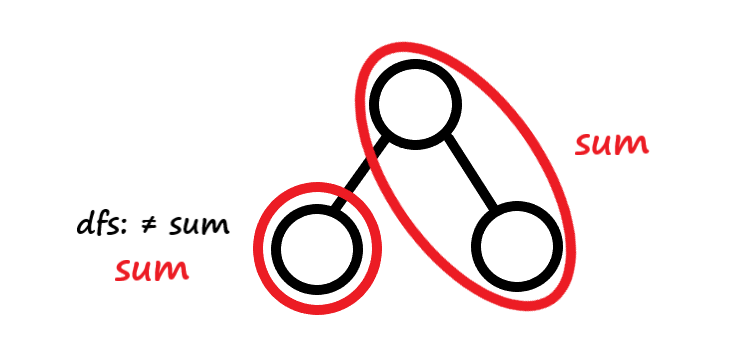旅行传送门
A. Gamer Hemose
题意:给你 \(n\) 种武器,每种武器可以造成 \(a_i\) 的伤害。现在你面对一名生命值为 \(H\) 的敌人,每次攻击你可以选择一种武器并对敌人造成相应伤害直至其死亡( \(H \leq 0\) ),但你不能连续两次都选择相同的武器。现问你最少需要攻击多少次可以解决掉敌人?
题目分析:贪心,由于不能连续两次使用相同的武器,所以轮换着使用伤害值最高的武器和伤害值次高的武器即可。
AC代码:
#include <bits/stdc++.h>
#define rep(i, x, y) for (register int i = (x); i <= (y); i++)
#define down(i, x, y) for (register int i = (x); i >= (y); i--)
char buf[1 << 23], *p1 = buf, *p2 = buf, obuf[1 << 23], *O = obuf;
#define getchar() (p1 == p2 && (p2 = (p1 = buf) + fread(buf, 1, 1 << 21, stdin), p1 == p2) ? EOF : *p1++)
inline int read()
{
int x = 0, f = 1;
char ch = getchar();
while (!isdigit(ch))
{
if (ch == '-')
f = -1;
ch = getchar();
}
while (isdigit(ch))
{
x = x * 10 + ch - '0';
ch = getchar();
}
return x * f;
}
int solve()
{
int n, h;
n = read(), h = read();
std::vector<int> a(n + 1);
rep(i, 1, n) a[i] = read();
std::sort(a.begin() + 1, a.begin() + n + 1);
int sum = a[n - 1] + a[n];
int left = h % sum;
int res = 2 * (h - left) / sum;
while (left > 0)
{
left -= (res & 1) ? a[n - 1] : a[n];
++res;
}
return res;
}
int main(int argc, char const *argv[])
{
int T = read();
while (T--)
printf("%d\n", solve());
return 0;
}
B. Hemose Shopping
题意:给你一个长度为 \(n\) 的序列,你可以执行下列操作任意次:
- 交换两个下标分别为 \(i\) 与 \(j\) 的元素 \(a_i\) 与 \(a_j\) ( \(|i - j| \geq x\) )
问是否可能通过有限次操作使得序列按非递减排序?
题目分析:运用集合的思想来考虑这个问题,对每个 \(i\) ,其与 \([i+x,n]\) 属于同一集合,我们可以将集合内的元素看成一个新序列,在这个新序列中交换元素不再有上述限制,因此必定能按非递减排序。不难发现,只有 \([n - x + 1, x]\) 内的元素不在集合中,因此合法的情况只有这些数最开始就待在它们本该待的地方,将它们与排序后的序列一一比对即可。
AC代码:
#include <bits/stdc++.h>
#define rep(i, x, y) for (register int i = (x); i <= (y); i++)
#define down(i, x, y) for (register int i = (x); i >= (y); i--)
const int maxn = 1e5 + 5;
char buf[1 << 23], *p1 = buf, *p2 = buf, obuf[1 << 23], *O = obuf;
#define getchar() (p1 == p2 && (p2 = (p1 = buf) + fread(buf, 1, 1 << 21, stdin), p1 == p2) ? EOF : *p1++)
inline int read()
{
int x = 0, f = 1;
char ch = getchar();
while (!isdigit(ch))
{
if (ch == '-')
f = -1;
ch = getchar();
}
while (isdigit(ch))
{
x = x * 10 + ch - '0';
ch = getchar();
}
return x * f;
}
bool solve()
{
int n = read(), x = read();
std::vector<int> a(n + 1), b(n + 1);
rep(i, 1, n) a[i] = b[i] = read();
if (x <= n / 2)
return true;
std::stable_sort(b.begin() + 1, b.begin() + n + 1);
rep(i, n - x + 1, x) if (a[i] ^ b[i]) return false;
return true;
}
int main(int argc, char const *argv[])
{
int T = read();
while (T--)
puts(solve() ? "YES" : "NO");
return 0;
}
C. Bakry and Partitioning
题意:给你一棵含 \(n\) 个节点,每个节点权值为 \(a_i\) 的树,现问你能否将这棵树分为至少 \(2\) 个,至多 \(k\) 个连通块,且每个块的异或和都相等。
题目分析:首先求出整棵树的异或和 \(sum\) ,分类讨论:
- \(sum = 0\) ,说明只删一条边即可将整棵树分成两个异或和相等的连通块,显然可行
- \(sum \not= 0\) 且 \(k = 2\) ,假设此时 \(sum = x\) 且 \(x \not= 0\) ,若可将其分成两个异或和均为 \(y\) 的连通块,则有 \(y \bigoplus y = x = 0\) ,与假设矛盾,故不成立
- \(sum \not= 0\) 且 \(k > 2\) ,由于异或和的性质,相同的值异或奇数次不变,偶数次为 \(0\) 。因此我们通过 \(dfs\) 每找到一棵异或和为 \(sum\) 的子树,便将它单独拆出来,若最后能分成三个以上的连通块则可行。
用图解释就是:

为什么拆出来的一定是子树呢?如图,因为 \(dfs\) 是自下而上搜索的,若拆出来的是一条链,说明这条链与那个单独拆出来的子节点的异或和均为 \(sum\) ,但 \(dfs\) 到这个子节点的时候并没有将它拆出来,说明它的异或和不为 \(sum\) ,与假设矛盾,故证。

AC代码:
#include <bits/stdc++.h>
#define rep(i, x, y) for (register int i = (x); i <= (y); i++)
#define down(i, x, y) for (register int i = (x); i >= (y); i--)
const int maxn = 1e5 + 5;
char buf[1 << 23], *p1 = buf, *p2 = buf, obuf[1 << 23], *O = obuf;
#define getchar() (p1 == p2 && (p2 = (p1 = buf) + fread(buf, 1, 1 << 21, stdin), p1 == p2) ? EOF : *p1++)
inline int read()
{
int x = 0, f = 1;
char ch = getchar();
while (!isdigit(ch))
{
if (ch == '-')
f = -1;
ch = getchar();
}
while (isdigit(ch))
{
x = x * 10 + ch - '0';
ch = getchar();
}
return x * f;
}
int n, k, cnt, a[maxn], sum[maxn];
std::vector<int> g[maxn];
void init()
{
cnt = 0;
memset(sum, 0, sizeof(sum));
rep(i, 1, n) g[i].clear();
}
void dfs(int u, int f)
{
sum[u] ^= a[u];
for (auto v : g[u])
{
if (v == f)
continue;
dfs(v, u);
sum[u] ^= sum[v];
}
if (sum[u] == sum[0])
++cnt, sum[u] = 0;
}
bool solve()
{
n = read(), k = read();
init();
rep(i, 1, n) a[i] = read();
rep(i, 1, n - 1)
{
int u = read(), v = read();
g[u].push_back(v);
g[v].push_back(u);
}
rep(i, 1, n) sum[0] ^= a[i];
if (!sum[0])
return true;
if (sum[0] && k < 3)
return false;
dfs(1, 0);
return cnt >= 3 ? true : false;
}
int main(int argc, char const *argv[])
{
int T = read();
while (T--)
puts(solve() ? "YES" : "NO");
return 0;
}
E. Bored Bakry
题意:给你一个长度为 \(n\) 的序列 ,当一个子序列满足 \(a_l \& a_{l+1} \& a_{l+2}...\& a_r>a_l \bigoplus a_{l+1} \bigoplus a_{l+2}...\bigoplus a_r\) 时,我们称其为 \(good\) 子序列,现要你找出最长的 \(good\) 子序列。
题目分析:考虑什么情况下会满足一段区间的按位与 \(\& > \bigoplus\) ,根据按位与及异或和的性质,即存在二进制下某一位 \(i\) ,有:
- 对所有 \(> i\) 的位二者相等,即这段子序列在高位的按位与及前缀异或和为 \(0\)
- 在第 \(i\) 位上 \(\& > \bigoplus\) ,进一步可以推断出序列长为偶数,因为要让第 \(i\) 按位与占优,那第 \(i\) 位必定全为 \(1\) ,此时要让异或和较小,唯一的情况只有偶数个 \(1\) 异或
- 第 \(i\) 位上已有 \(\& > \bigoplus\) ,故 \(< i\) 的位不作考虑
接下来就是代码实现,我们从高位向低位枚举每一位二进制 \(i\) ,得到一个新的序列 \(b_i\) ,此时的 \(b_i\) 包含了高位与当前位的信息,然后从 \(b_i\) 中选出当前位为 \(1\) 的连续的一段去更新答案,更新时我们记录前缀异或和与每一个异或值首次出现的位置,这样就能同时保证选出的 \(good\) 序列长度为偶数且前缀异或和为 \(0\) ,原因如下:
- 根据异或和的性质: \(a_4 \bigoplus a_5 \bigoplus a_6 = (a_1 \bigoplus a_2 \bigoplus a_3) \bigoplus (a_1 \bigoplus a_2 \bigoplus...\bigoplus a_6)\) ,所以当前缀异或和有 \(sum_{l-1} = sum_{r}\) 时, \([l,r]\) 段的异或和为 \(0\)
- 因为我们同时存储了高位与当前位的信息,所以当 \(pos\) 数组发生更新的时候,即存在上述所言的 \(sum_{l-1} = sum_{r}\) 时,此时必定有高位前缀异或和为 \(0\) ,且当前位连续的一段 \(1\) 为偶数个
笔者水平有限(无论语文还是写题),有疑问或更好的做法请在评论区留言,不足之处请谅解,谢谢
AC代码:
#include <bits/stdc++.h>
#define rep(i, x, y) for (register int i = (x); i <= (y); i++)
#define down(i, x, y) for (register int i = (x); i >= (y); i--)
const int maxn = 1e6 + 5;
char buf[1 << 23], *p1 = buf, *p2 = buf, obuf[1 << 23], *O = obuf;
#define getchar() (p1 == p2 && (p2 = (p1 = buf) + fread(buf, 1, 1 << 21, stdin), p1 == p2) ? EOF : *p1++)
inline int read()
{
int x = 0, f = 1;
char ch = getchar();
while (!isdigit(ch))
{
if (ch == '-')
f = -1;
ch = getchar();
}
while (isdigit(ch))
{
x = x * 10 + ch - '0';
ch = getchar();
}
return x * f;
}
int n, ans, a[maxn], b[maxn], sum[maxn], pos[maxn];
int solve(int l, int r)
{
if (l >= r)
return 0;
//记录前缀异或和
sum[l - 1] = 0;
rep(i, l, r) sum[i] = sum[i - 1] ^ b[i];
//记录每一个异或值首次出现的位置
//只有高位前缀异或和为 0 的情况下,sum才可能出现重复,pos才会发生更新
down(i, r, l - 1) pos[sum[i]] = i;
int res = 0;
//异或和的性质,a4 ^ a5 ^ a6 = (a1 ^ a2 ^ a3) ^ (a1 ^ a2 ^...^ a6)
//即 sum[l-1] = sum[r] ,则 [l,r] 的异或和为 0 ,保证了偶数段长度
rep(i, l, r) res = std::max(res, i - pos[sum[i]]);
return res;
}
int main(int argc, char const *argv[])
{
n = read();
rep(i, 1, n) a[i] = read();
down(i, 20, 0)
{
//枚举每一位
rep(j, 1, n) b[j] = a[j] >> i;
int l = 1, r = 1;
while (r <= n)
{
//将当前位为 1 的连续段选出来
while (l <= n && !(b[l] & 1))
++l;
r = l;
while (r <= n && (b[r] & 1))
++r;
ans = std::max(ans, solve(l, r - 1));
l = r;
}
}
printf("%d\n", ans);
return 0;
}